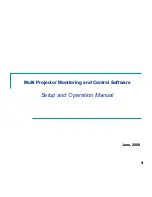
Known Problems and Limitations
55
Release 11.1.0
When you modify a rate-limit profile in Global Configuration mode after the
system is in a scaled state, changes to the rate-limit profile fail owing to lack of
adequate policy resources. However, the changed value of the rate-limit profile
is displayed in the output of the
show rate-limit profile
command. [Defect ID
79342]
Work-around
: To avoid this problem, do not update the rate-limit profile in
Global Configuration mode in a scaled environment.
When you enter the
no ip policy-parameter hierarchical
parameterName
command or
no ipv6 policy-parameter hierarchical
parameterName
command for a hierarchical policy-parameter type in Interface Configuration
mode, the explicit reference of the parameter is removed successfully from the
interface. However, the Referenced by interfaces field in the output of the
show policy-parameter
command does not change from the previously
configured value to implicit. [Defect ID 183957]
Work-around
: To correct this problem, remove the entire interface
configuration.
PPPoE
The E Series router erroneously accepts a PADI with a payload length of 0
instead of rejecting it and incrementing the PPPoE Invalid PAD packet length
counter. [Defect ID 48356]
QoS
You cannot paste a
load-rebalance
command string that uses the
percent
option into a console or Telnet session from
show configuration
output
because the output displays the % sign rather than the
percent
keyword that
was submitted with the command and the percent sign is not recognized by
the CLI. [Defect ID 81705]
The router cannot resolve inconsistent requests caused by two QoS profiles
that modify the same scheduler property inconsistently. [Defect ID 61485]
Work-around
: Avoid using two QoS profiles that modify the same scheduler
property inconsistently, such as setting different values for the shaping rate for
the same S-VLAN node.
When you perform an SNMP walk of the juniQosQueueStatistics MIB, a timeout
of up to 5 minutes ensues, during which the SRP module CPU utilization goes
to 100 percent. [Defect ID 62252]
The compound shared shaping feature does not work properly on egress
forwarding ASIC 2 (EFA2)-based ATM line modules when the shared shaper is
queue-controlled as opposed to node-controlled. In a node-controlled
configuration, in which you configure the shared-shaping rate on the best-effort
scheduler node for the logical interface, integration of the EFA2 and ATM
segmentation and reassembly (SAR) schedulers functions properly. However,
in a queue-controlled configuration, in which you configure the shared-shaping
rate on the best-effort queue for the logical interface, integration of the EFA2
and ATM SAR schedulers does not function properly. [Defect ID 69167]
















































